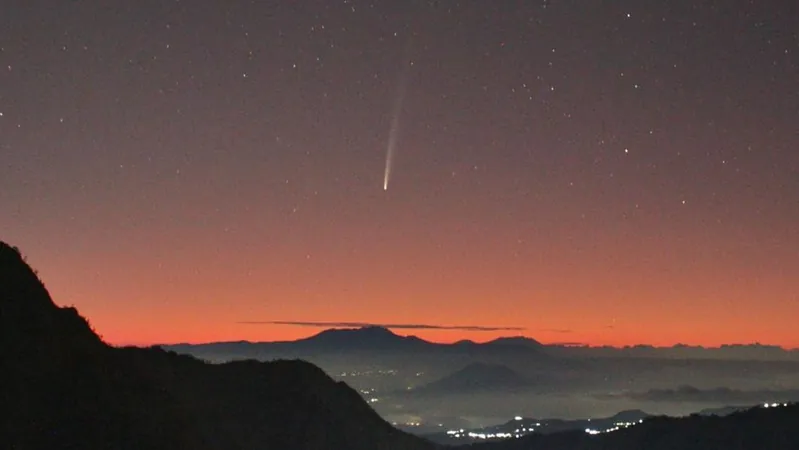
Don't Miss Your Once-In-80,000-Year Chance to Witness Comet Tsuchinshan-ATLAS!
2024-10-12
Author: Emma
The Comet's Historic Approach
This weekend, a celestial spectacle not seen in over a decade will grace the night sky for observers in the northern hemisphere. Comet Tsuchinshan-ATLAS, also known as comet A3 or C/2023 A3 (Tsuchinshan-ATLAS), is set to make its closest approach to Earth in an astonishing 80,000 years. The comet will pass within a stunning 44 million miles (70 million kilometers) of our planet, making this a once-in-a-lifetime opportunity to witness a prominent comet with the naked eye.
Discovery and Size
Initially discovered in January 2023 by the Tsuchinshan (Purple Mountain) Astronomical Observatory in China, Comet Tsuchinshan-ATLAS boasts a remarkable size: it has a coma that spans a diameter of approximately 130,000 miles (209,000 kilometers) and a dazzling tail that stretches an impressive 18 million miles (29 million kilometers) into the solar system.
Best Viewing Conditions
For those eager to catch a glimpse of this cosmic marvel, the best viewing conditions are expected to occur shortly after sunset. As the comet exits the sun’s glare and positions itself due west, stargazers should aim to find a spot with a clear view to the horizon. Ideal locations include areas that offer a low, unobstructed view like beaches or high ground. The comet will be situated between Antares, the brightest star in the constellation Scorpius, and Arcturus, the brightest star in Boötes.
Mark Your Calendars
Mark your calendars for this spectacular cosmic event, particularly on October 12, 13, and 14, when the comet is predicted to shine at its brightest. Astronomer Dr. Qicheng Zhang from Lowell Observatory even noted that it will feature a bright downward spike alongside its usual upward tail during this time, enhancing its visibility.
Time is of the Essence
However, time is of the essence! The comet has already started to fade after its peak brightness was recorded on October 9, when it shone as brightly as Venus. Due to its position in the sky and its moving trajectory away from the sun, observers will need to act quickly. Although the comet is dimming, it will become easier to see against the darkening sky as it climbs higher in the evening.
An Unforgettable Experience
This grand celestial body, having already captivated NASA’s attention, is showing signs of fading but offers an extraordinary visual treat for those wishing to experience one of nature's most majestic phenomena. Experts suggest that by around October 19 or 20, the comet will still be recognizable, but visibility may diminish significantly thereafter.
Prepare for Stargazing!
So, grab your binoculars, find a perfect viewing spot, and prepare for an unforgettable night of stargazing. Clear skies and wide eyes await as you embark on this unforgettable journey through space! Don't let this extraordinary opportunity pass you by!









 Brasil (PT)
Brasil (PT)
 Canada (EN)
Canada (EN)
 Chile (ES)
Chile (ES)
 España (ES)
España (ES)
 France (FR)
France (FR)
 Hong Kong (EN)
Hong Kong (EN)
 Italia (IT)
Italia (IT)
 日本 (JA)
日本 (JA)
 Magyarország (HU)
Magyarország (HU)
 Norge (NO)
Norge (NO)
 Polska (PL)
Polska (PL)
 Schweiz (DE)
Schweiz (DE)
 Singapore (EN)
Singapore (EN)
 Sverige (SV)
Sverige (SV)
 Suomi (FI)
Suomi (FI)
 Türkiye (TR)
Türkiye (TR)